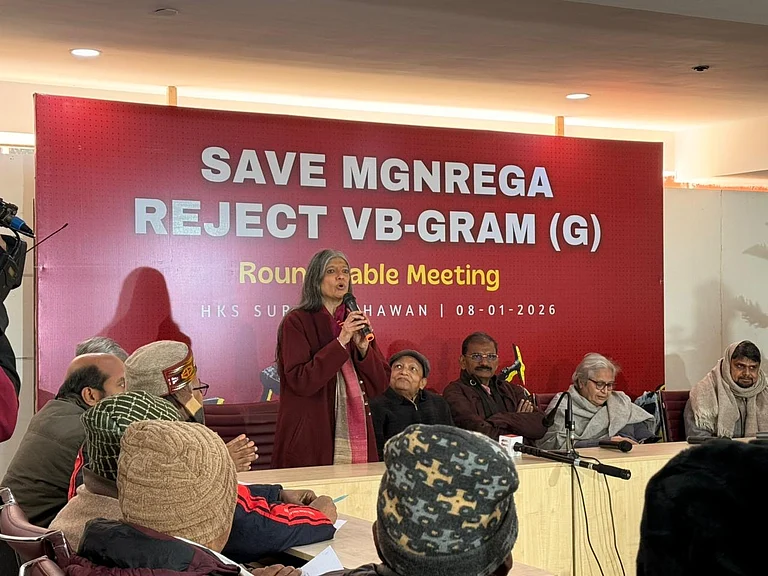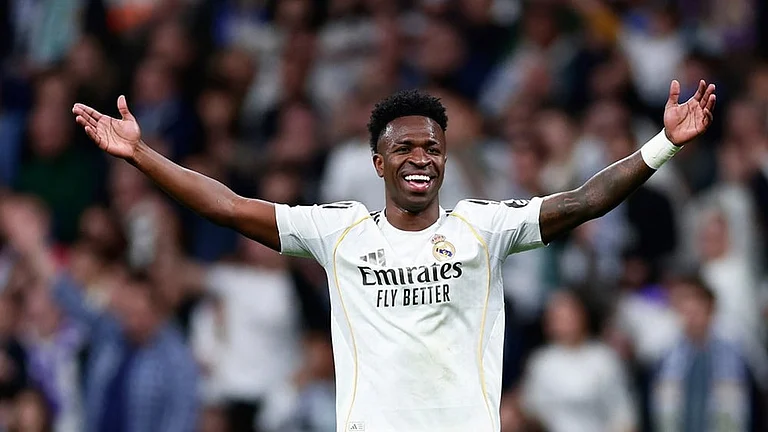
Goose steps in Berlinplatz
For students of modern history, Berlin stands for war—the wars of German unification, WWI and WWII and, finally, the Cold War that kept both Germany and Berlin divided and in ideological, political and diplomatic contention. Berlin today displays little of its militant past, emphasising industrial and economic success and on playing a responsible role in regional and world affairs within the EU framework.
Vulf’s lair
During a recent visit, I wished to see places linked with Germany’s recent history. In Berlin, this is best represented by the outdoor exhibition, Topography of Terror. Located on the spot where the headquarters of the Gestapo and the SS were located, with rubble of the old buildings still strewn about, the exhibition is a chronological depiction of the steady rise of Nazism and the regime’s excesses, in terms of the persecution of Jews, Gypsies, political opponents, the handicapped, etc.
Alongside this museum is a building that looks at the institutions of German fascism that conceived and carried out the brutalities associated with the Nazi era, including the identification, incarceration and annihilation of millions of Jews. At the centre of these institutions were Himmler, Bormann, Goebbels and Goering and, of course, Hitler. Many of the photos are of ordinary people; bureaucrats strutting in fancy uniforms. The exhibition makes it clear that, after the war, most of the Nazis went unpunished and were absorbed into Federal Germany’s governmental and economic establishments.
The Eye of the Zyklon
About 35 km to the north of Berlin is the Sachsenhausen concentration camp. It was set up in 1936 as a model camp which, up to 1945, took in about 2,00,000 prisoners. The gate of this camp bears the slogan, Arbeit macht Frei (Work shall set you free). From 1943, this camp evolved into an extermination centre, with the construction of gas chambers and ovens. Several thousands of Soviet prisoners were imprisoned here; they constituted an overwhelming majority of the 30,000 souls who died here.
Modern historians are still unable to understand how such an accomplished and sophisticated people could reach such depths of hate and violence, or why the Germans continued to support Hitler and the Reich with such fanatical devotion and loyalty to the bitter end. Given that opposition to Hitler was negligible, almost all German expositions emphasise the July 20, 1944, assassination attempt of Col Claus von Stauffenberg and his associates, recently revived by Tom Cruise in the film Valkyrie.
No skin off...
Berlin atones for its atrocities against the Jews through the Holocaust Memorial, an open space of grey, grim concrete slabs of different sizes placed irregularly in the town centre, while on its basement walls are inscribed the names of Jewish victims. Jews in modern Germany number over a 1,00,000 and generally feel at home. However, since June, a controversy has threatened this relatively benign environment. A district court in Cologne has ruled that circumcision constitutes child torture and violates bodily integrity. A group of 600 German intellectuals has supported the court’s ruling, even seeing in circumcision sexual violence against underage boys. Jews and Muslims of course view this as an existentialist threat. In early September, Jewish and Muslim organisations organised a joint protest in Berlin. In place of the anger and bitterness that has defined their ties over the last few decades, is it possible that this unfortunate dispute could encourage Jewish and Muslim communities to rediscover their joint heritage in terms of the prophets revered by them, their long history of camaraderie and mutual support, and the numerous religious and cultural traditions they share?
Up-Root
Potsdam, just 24 km from Berlin, is where the seeds of the German empire were planted by Frederick the Great and where, from July-August 1945, the victorious powers presided over its destruction. This beautiful city is adorned with numerous gardens and palaces, including the Cecilienhof palace where the Potsdam conference took place. Here the Allies, in effect, sanctioned the enlarged Soviet empire made up of Soviet republics and satellite states, while dividing Germany itself.
‘Mr Gorbachev’
The Berlin Wall was brought down dramatically in November 1989. Some slabs remain as memorials and attract thousands of tourists. The route of the old wall is marked by cobbled stones embedded in the streets. It’s difficult today to recall the era when Berlin was “the most dangerous place on earth”, with well-founded fears of the East-West standoff leading to nuclear conflagration. jfk had his moment in Berlin on June 26, 1963, when, before its residents, he proclaimed “Ich bin ein Berliner”.
Another Hitler?
Alarmed at the thousands of rapturous Germans welcoming jfk to the city before his address, chancellor Adenauer turned worriedly to Dean Rusk and asked: “Do you think we could have another Hitler here?”
Talmiz Ahmad is a former diplomat; E-mail your diarist: talmiz.ahmad AT gmail.com






















